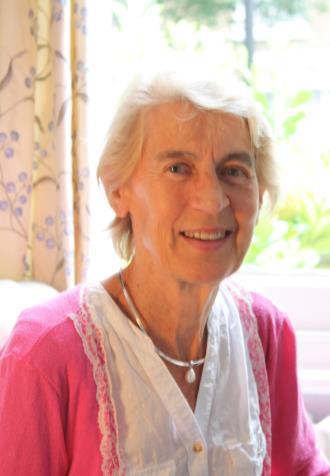
I come from a family who did not believe in higher education for girls. As a result, I did not go to university until I was 30. Prior to that I worked in a commercial art gallery in Bond Street, London. (The only person in my family who had gone to university before me was my grandfather who went to Cambridge before the First World War and left after a year because the polo was better in India!)
While working in the art gallery I studied an Open University mathematics course and on the strength of it I was accepted to study mathematics at Kings College London. While I was at Kings, I became interested in the history of mathematics, and in particular 19th century mathematics, and decided I wanted to do a PhD. Before doing any further study, I needed to shore up my finances so worked in the City for a couple of years. I then returned to Kings to do a Master’s in mathematical physics in order to gain a firm base in the subjects I would need for my PhD. I went to the OU to do my PhD (as a full-time student), choosing the OU because at the time it was the only university where it was possible to study for a PhD in history of mathematics in a mathematics, as opposed to humanities, department. I had the good fortune to be supervised by Jeremy Gray who from the start encouraged me to think of my thesis as a book. As a result, my thesis, Poincaré and the Three Body Problem, was published which was a great help for my career. I stayed at the OU on a 3-year Leverhulme grant, and, after some short-term contracts was appointed to a permanent position and have remained at the OU ever since. As well as researching 19th/20th century mathematics, I teach both mathematics and history of mathematics. One of the benefits of working at the OU is the opportunity to work with the media, both radio and television, which I have done since being a PhD student. I am now also a visiting professor at the London School of Economics.
There are many things I like about my research – from supervising research students, to working in archives and handling precious documents, as well as meeting all sorts of interesting people who work in wide range of fields from Mesopotamian mathematics to mathematics of the present day. My research has also provided me with many opportunities for overseas travel, both to work in archives and libraries (many of them in stunning buildings!) and to participate in conferences and workshops, such as meetings in Oberwolfach and in Luminy, and much further afield. I have also had the good fortune to be involved with the development of the new mathematics gallery at the London Science Museum and to co-curate an exhibition at the Guildhall Art Gallery.
My research has led me in many different directions such as the foundations of chaos theory, the early history of Rolle’s theorem, and the mathematics of the 19th century photography pioneer WH Fox Talbot, to give just a few examples. I have also done an extensive study of the role of British mathematicians in the First World War. This looked at mathematicians who worked in aeronautics and ballistics, as well as at those who, for reasons of conscience, did not contribute to the war effort. It also looked at the contribution of women mathematicians. The latter has fed into my current project on the history of the gender gap in mathematics, especially the historical representation of women mathematicians in a variety of media. I am particularly enjoying this project not least because it has given me an opportunity to draw on my art gallery experience.
I feel privileged to have been elected as chair of the International Commission on the History of Mathematics, as well as being a former President of the British Society for the History of Mathematics, and former Librarian and member of the Council of the LMS. All these roles have helped to keep me in touch with many different activities and initiatives in mathematics as well as in history of mathematics.
When not burrowing in archives, I am usually to be found either wandering in an art gallery or on a bike or out running – the London Marathon is an annual challenge!
